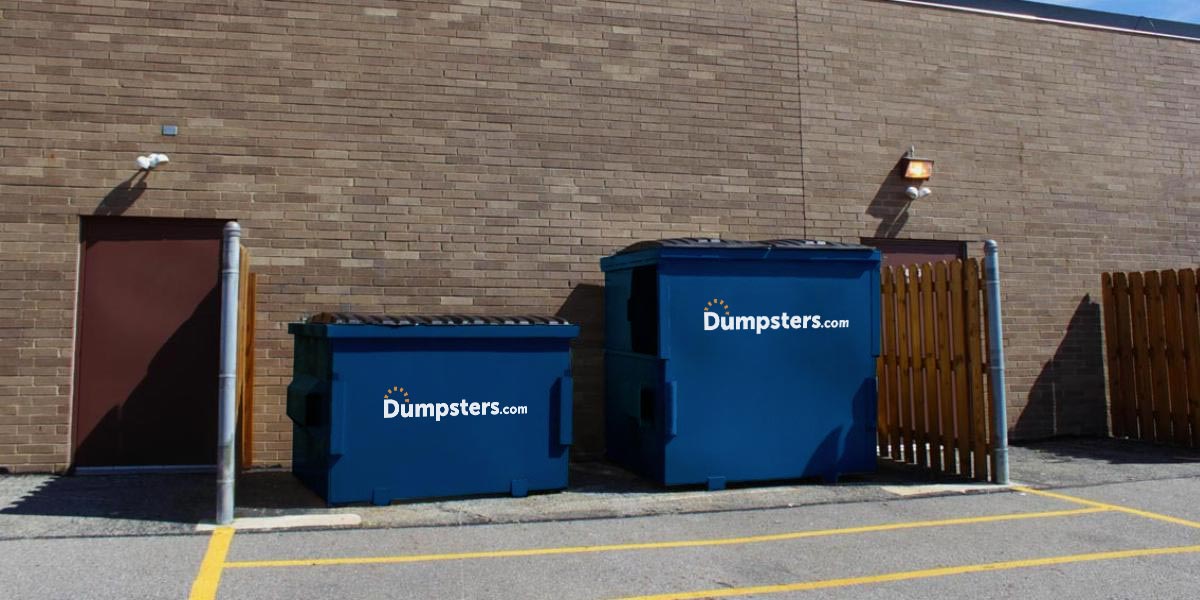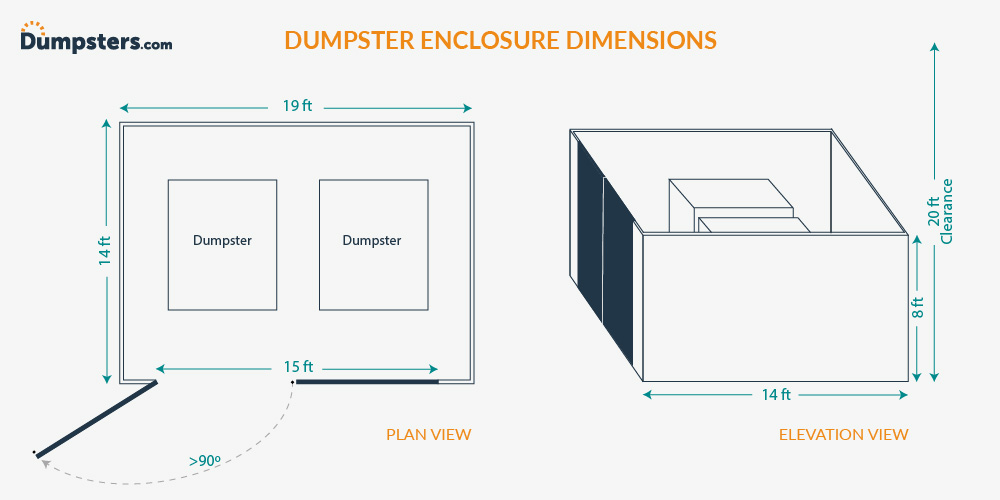
A good permanent dumpster service is necessary to keep your organization running efficiently, but your bins are better off hidden from your customers. Not to mention the people who see them as their own personal dumping ground or the raccoons and coyotes who may find your trash appetizing. Not to worry - building a dumpster corral can help with these problems, and it isn't difficult. We're here to show you how.
A dumpster enclosure is a fenced-in area that allows you to hide your temporary or commercial container from view in order to keep your property looking clean and presentable. It will also prevent trash from being picked up by the wind, animals from accessing your bin and strangers from illegally dumping in your container, which could cause you to rack up extra fees.
Choose a Step
When you're ready to build a dumpster corral, it helps if you go in with a plan. Use these steps to choose the right material for your enclosure, ensure you have enough space and successfully build your fence.
The last thing you want to do is go into the project not feeling confident. Here are some considerations to keep in mind as you prepare to build your corral and pick a dumpster enclosure design.
Dumpster fences can be made out of several different materials. The chart below shows some pros and cons of each to help you choose.
|
|
|
|
| Wood |
|
|
| Vinyl |
|
|
| Chain link with slats |
|
|
|
Metal |
|
|
|
Concrete |
|
|
Pro-Tip: Some cities require dumpster fences be made out of a specific material. Check the regulations in your area by searching your local Building Department’s website or giving them a call.
The cost of your dumpster enclosure will depend on the following factors:
Keep in Mind: In addition to maintaining the aesthetic of your property, installing a dumpster enclosure is also a cost-saving measure. It protects your container from illegal dumpers who may toss the wrong materials in your bin or overload the container, resulting in extra fees.
The dimensions of your dumpster enclosure need to account not only for the size of the dumpster itself but leave enough room for employees to use your bin and for a garbage truck to pick it up. Dumpster corrals can be built with a variety of dimensions, but use the table below as a general starting point.

Typical Minimum Dumpster Enclosure Dimensions
| Height: | 8 feet |
| Length: | 14 feet |
| Width/Depth: | 19 feet |
| Gate Opening: | 15 feet |
| Gate Swing: | More than 90 degrees |
| Overhead Clearance: | 20 feet |
| Truck Approach Length: | 60 feet |
Pro-Tip: Some cities require their own dimensions for dumpster enclosures. Check with your local Building Department to find out if any rules apply in your area.
It’s tempting to try to save some money by putting up your enclosure yourself, but it may end up costing more in the long run if you make mistakes. Some types of dumpster corrals are better candidates for DIY installation than others.
Choose DIY or Professional Enclosure Installation |
||
|
|
|
Hire a Pro |
|
|
|
|
|
|
|
|
|
|
|
|
|
|
|
|
|
|
|
|
Since you’ll likely be building your dumpster enclosure on a parking lot or other concrete surface, keep in mind that you if you choose DIY installation you’ll need to rent a hammer drill to create post holes. Whatever surface you’re building your fence on, you’ll need to mix and pour concrete to make the posts sturdy. If you’re not up for either of those tasks, choose pro installation no matter what type of corral you’re building. It’s much more cost-effective to get it done right upfront than to build a flimsy fence that can’t stand up to repeated use.
If you’ve decided to DIY your dumpster enclosure installation, read on for our handy instructions.
Important Safety Tip: Always call Digline at 8-1-1 before any digging project to make sure you’re not in danger of hitting utility lines. This protects you from potential injury and extremely costly damages.
From here on out, simply assemble your wood or vinyl dumpster corral according to the manufacturer’s instructions.
Place your dumpster at least 50 feet from your building. If space allows, shoot for at least 100 feet from the closest entrance. Keep in mind that this may affect the dimension requirements for your enclosure.
Yes, you'll likely require that you obtain a permit in order to add a dumpster corral to your property. Check your city's website for more information.
It's a good idea to place a locked, temporary fence around a roll off dumpster or your job site while you work through a construction project or home remodel to keep unwanted guests from using your container. See more steps to protect your roll off from illegal dumping.
Once you’ve installed a commercial dumpster enclosure, you can take out the trash without it being an eye-sore for your customers--or finding other people’s rubbish hitching a ride with the garbage service you pay for. If you have more questions about sizing or placement for your dumpster corral, give our team a call at 1-877-880-5286. We’re here to help.
Recommended reading: How to Plan a Waste Audit | Setting Waste Diversion Goals